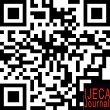Need Analysis of Designing an ESP Course for Sharia and Law Faculty Lecturers: A Case Study of Sayed Jamaluddin Afghani University, Afghanistan
Abstract
Learning English language is the need of the day. Being an international
language and the language of modern education; English language learning
has got special attention these days. The wide use of English language in
various settings has increased the demand of its learning and has motivated
everyone, regardless of their walk of life to learn English. To meet the
demands of English-based education, especially in academic settings, there
is a recognized need for English language learning. This study is a needs
analysis of designing an ESP course for the lecturers of Sharia and Law
faculty at Sayed Jamaluddin Afghani University (SJAU), Kunar,
Afghanistan to improve their English language skills and take benefit of it
in the academic setting. To be specific, lecturers’ perceptions towards the
need of ESP course, choice of contents, level of difficulty and language skills
that need improvement and inclusion in the ESP course were investigated.
From 19 lecturers at the Faculty of Sharia and Law 10 lecturers were
randomly selected as the sample of the study. An explorative mixed method
case study design was used for the study. Mixed method design was used for
the study to fully explore the research area and confirm the findings of
qualitative data with the quantitative data. Semi-structured interviews
containing 8 questions and a close ended questionnaire containing 16
questions were used as the data collection instruments. The qualitative data
was first thematically analyzed followed by quantitative data which was
descriptively analyzed using frequencies and percentages through SPSS. The
findings of the study revealed that the lecturers of Sharia and Law Faculty
have positive perceptions towards the need of designing an ESP course for
them. The proposed ESP course should use an intermediate level of contents
and should focus on developing the four language skills especially reading
and writing. Furthermore, the findings of the study revealed that the
proposed ESP course should cover the grammar section to help the lecturers
in developing their English grammar skills.
Keywords
Full Text:
DOWNLOAD [PDF]References
Ahmed Alsamadani, H. (2017). Needs Analysis in ESP Context: Saudi Engineering Students as a Case Study. Advances in Language and Literary Studies, 8(6), 58. https://doi.org/10.7575/aiac.alls.v.8n.6p.58
Alamyar, M. (2017). Emerging Roles of English in Afghanistan. In Number (Vol. 14). https://journals.iupui.edu/index.php/intesol/article/download/21733/20955
Al-Khawaldeh, N., Bani-Khair, B., & Al-Edwan, Y. (2016). The Impact of Poor English Language Proficiency on Professional Development of Professors at Jordanian Universities. Arab World English Journal, 7(3), 134–145. https://doi.org/10.24093/awej/vol7no3.10
Álvarez Faedo, M. J. (2015). Teaching Legal English for Company Law: A Guide to Specialism and ELP Teaching Practices and Reference Books. Revista Alicantina de Estudios Ingleses, 28, 15. https://doi.org/10.14198/raei.2015.28.02
Braun, V., & Clarke, V. (2006). Using thematic analysis in psychology. Qualitative Research in Psychology, 3(4), 77-101. http://dx.doi.org/10.1191/1478088706qp063oa
Chovancová, B. (2014). Needs analysis and esp course design: Self-perception of language needs among pre-service students. Studies in Logic, Grammar and Rhetoric, 38(51), 43–57. https://doi.org/10.2478/slgr-2014-0031
Creswell, J. W., & Plano Clark, V. L. (2018). Designing and Conducting Mixed Methods Research. In Organizational Research Methods (Vol. 12, Issue 4). https://login.proxy.libraries.rutgers.edu/login?url=http://search.ebscohost.com.proxy.libraries.rutgers.edu/login.aspx?direct=true&db=buh&AN=44386156&site=ehost-live
Crosthwaite, P. (2016). A longitudinal multidimensional analysis of EAP writing: Determining EAP course effectiveness. Journal of English for Academic Purposes, 22, 166–178. https://doi.org/10.1016/j.jeap.2016.04.005
Dimova, S. (2021). Certifying lecturers’ Englishlanguage skills for teaching inEnglish-medium instructionprograms in higher education. ASp, 79: 29-47. https://doi.org/10.4000/ASP.7056
Ding, A., & Bruce, I. (2017). The English for Academic Purposes Practitioner. In The English for Academic Purposes Practitioner. https://doi.org/10.1007/978-3-319-59737-9
Dundon, J. T. (2022). Hywel Coleman: The Condition of English in Multilingual Afghanistan. Language Policy, 21(1), 159–161. https://doi.org/10.1007/s10993-021-09600-5
Essa, M. A. E. F. I., Hassan, I., & Ramlee, M. N. A. (2020). Developing language proficiency for academic purposes: A study of sharia law students in Malaysia. International Journal of Scientific and Technology Research, 9(3), 5381–5384. https://papers.ssrn.com/sol3/papers.cfm?abstract_id=3573465
Jeczelewski, S. (University of I. (2016). Needs Analysis, Course Design and Evaluation of Business English. BA Research Project, University of Iceland School of Humanities Department of English, May, 28. http://hdl.handle.net/1946/24444
Kardijan, D., & Yundayani, A. (2019). The challenges of pedagogy and the application of ICT in applying english for academic purposes course: Teachers’ insights. International Journal of Innovation, Creativity and Change, 9(1), 197–213. https://www.ijicc.net/images/vol9iss1/9118_Kardijan_2019_E_R.pdf
Kaur, S., & Khan, A. B. M. A. (2010). Language Needs Analysis of Art and Design Students: Considerations for ESP Course Design. ESP World, 9(2), 81–87. http://www.ncbi.nlm.nih.gov/pubmed/15003161%5Cnhttp://cid.oxfordjournals.org/lookup/doi/10.1093/cid/cir991%5Cnhttp://www.scielo.cl/pdf/udecada/v15n26/art06.pdf%5Cnhttp://www.scopus.com/inward/record.url?eid=2-s2.0-84861150233&partnerID=tZOtx3y1
Latta, R. M. (1978). Notes in brief... Environmental Psychology and Nonverbal Behavior, 2(4), 250–252. https://doi.org/10.1007/BF01173772
Lin, F. (2018). Exploring the Influence of English for Specific Purposes ( ESP ) Curriculum on Chinese Graduates ’ Career By Fang Lin A Thesis Submitted to the Faculty of Graduate Studies through the Faculty of Education in Partial Fulfillment of the Requirements for the. https://www.proquest.com/openview/a37e0f0d47ab57a3265be883ad07ecd6/1?pq-origsite=gscholar&cbl=18750
Mandasari, Y. P., & Wulandari, E. (2021). Teaching ESP during emergency remote learning (ERL): Best practices. ELT Forum: Journal of English Language Teaching, 10(2), 154–162. https://doi.org/10.15294/elt.v10i2.47884
Margareth, H. (2017). No Title طرق تدريس اللغة العربية. Экономика Региона, 32. https://jicnusantara.com/index.php/jicn/article/view/245?articlesBySameAuthorPage=2
Milloy, J., Benea, C.-B., Askins, K., Lin, W., Wilson, A., Mitra, R., Pardesi, M. S., Mashayekhi, A., Santos Françoso, M., Trojbicz, B., Alencar Silva Mello, P., Hiratuka, C., Rogers, D., Koh, S. Y., Chen, W., Krieger, N., Wilson, H. F., Lin, H., LEE, T.-L., … Pommerolle, M.-E. (2022). Nationalism, Geopolitics, And Naval Expansionism: From the Nineteenth Century to the Rise of China. Geopolitics, 23(1), N.PAG – N.PAG. https://search.ebscohost.com/login.aspx?direct=true&AuthType=ip,shib&db=bsu&AN=54329743
Pielmus, C. (2018). Teaching Legal English to Law School Students Through Vocabulary Practice Tasks. Studia Universitatis Babeș-Bolyai Psychologia-Paedagogia, 63(1), 27–48. https://doi.org/10.24193/subbpsyped.2018.1.02
Pranoto, B. E., & Suprayogi, S. (2020). A Need Analysis of ESP for Physical Education Students in Indonesia. Premise: Journal of English Education, 9(1), 94. https://doi.org/10.24127/pj.v9i1.2274
Qosim Arsadani, U. K. A. (2014). Instructional Design In Teaching English For Law (A Project Based Learning Instruction in English II for Law Science Department). SALAM: Jurnal Sosial Dan Budaya Syar-I, 1(2). https://doi.org/10.15408/sjsbs.v1i2.1544
Rahman, M. M. (2012). The English language needs of computer science undergraduate students at Putra University, Malaysia: A focus on reading skills. English for Specific Purposes World, 12(34), 1–23. https://web.archive.org/web/20180410102623id_/http://esp-world.info/Articles_34/DOC/ESP_Rahman.pdf
Solikhah, I. (2020). Revisiting EAP syllabus for Indonesian learners. Asian ESP Journal, 16(22), 5–25. https://www.researchgate.net/profile/Nareeman-Rasheed-2/publication/343793927_Pragmatics_of_Immigration_Identity_Computational_Study_of_Online_Discourses/links/5f3fcf3a299bf13404db0baf/Pragmatics-of-Immigration-Identity-Computational-Study-of-Online-Discourses.pdf#page=5
Sothan, S. (2015). Exploring English Language Needs According to Undergraduate Students and Employers in Cambodia. International Journal of Linguistics and Communication, 3(1). https://doi.org/10.15640/ijlc.v3n1a11
Tariq Mahmood Khan, B., Naeem Mohsin, M., Hussain Dogar, A., & Sher Awan, A. (2011). Needs Analysis of English for Occupational and Specific Purposes. International Journal of Social Sciences and Education, ISSN(1), 2223–4934. http://ijsse.com/sites/default/files/issues/2011/v1i4/paper%2026/paper%2026.pdf
Viola, K. (2022). “ That Was The Start Of An Academic Career ” “ That Was The Start Of An Academic Career .” http://pea.lib.pte.hu/handle/pea/34573
Watanapokakul, S. (2023). English for Event Management: A Mixed Methods Study for Needs Analysis and Course Design. Thaitesol Journal, 35(1), 38. https://eric.ed.gov/?q=need+analysis+for+english+class&id=EJ1340917
Widodo, H. P. (2017). Approaches to needs analysis in ESP curriculum development. The European Journal of Applied Linguistics and TEFL, 18(3), 127–146. https://www.academia.edu/download/54492126/Approaches_to_Needs_Analysis_2017.pdf
Zohoorian, Z. (2015). A Needs Analysis Approach: An Investigation of Needs in an EAP Context. Theory and Practice in Language Studies, 5(1), 58. https://doi.org/10.17507/tpls.0501.07
DOI: https://doi.org/10.31764/ijeca.v7i2.23288
Refbacks
- There are currently no refbacks.
Copyright (c) 2024 Hazrat Usman Mashwani, Siti Maftuhah Damio, Nur Amalina Mohd Sharif

This work is licensed under a Creative Commons Attribution-ShareAlike 4.0 International License.
IJECA (International Journal of Education and Curriculum Application) already indexed:










___________________________________________________________________
| |
____________________________________________________________________
IJECA Publisher Office:







.jpg)




